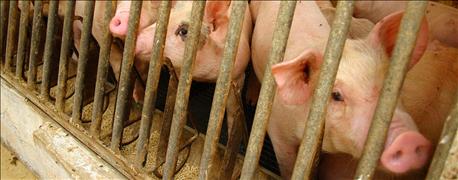November 16, 2016

Carefully managed transitions support optimal returns on investment, says Dan McManus, DVM, young animal swine specialist with Purina Animal Nutrition.
“Smooth transitions help pigs stay focused on intake and feed conversion for optimal gut health and overall performance,” McManus says. “If you manage the environment to limit transitional challenges, you can help your pigs build on their weaning weights for optimal end of nursery weights.”
 Take a hard look at how well you are managing transitions. You might find a low-cost change in management could save more money than a cut to inputs in the long run. (Photo: Ingram Publishing/Thinkstock)
Take a hard look at how well you are managing transitions. You might find a low-cost change in management could save more money than a cut to inputs in the long run. (Photo: Ingram Publishing/Thinkstock)
According to research at the Purina Animal Nutrition Center, weaning weights and end-of-nursery weights are strong predictors of finishing weights. In an 18-month study involving 1,770 pigs, results indicated each additional pound at weaning was correlated to an increase of 1.8 pounds at Day 32. Each additional pound at Day 32 post-weaning correlated to 2.1 additional pounds at finishing on Day 110.
Here are three areas to evaluate to help pigs build on their weaning and end-of-nursery weights through optimal transition management.
1. Know what your pigs need before arrival
The more accurate information you can get from the source farm, the better care you can give your pigs when they arrive. Be sure to confirm the exact number of head and arrival dates, the ages and weights of the pigs and the percentage of health-challenged pigs. Good communication with the sow farm will allow you to be prepared and anticipate any issues that might come up in the first few weeks after weaning.
“The more you know about the way the source farm operates, the better job you can do minimizing changes for the pigs,” McManus says. “Every change you eliminate is one less hurdle for them to jump.”
2. Minimize stress with a spotless environment
One simple, low-cost way to promote healthy pigs is to be diligent when cleaning before new groups arrive, McManus says. Clean your barn top to bottom, inside and out. This includes cleaning slats, feeders, gating, inlets, fans and curtains, as well as office equipment, boots, rattle paddles and sorting panels. All surfaces should be disinfected and dried before new pigs arrive. Consider inspecting the facility when cleaning is finished to make sure it meets your expectations.
“Thorough cleaning and management of the environment will help reduce stress factors including disease risk,” McManus says. “This helps give arriving pigs the opportunity to perform their best, avoiding potential performance lags,” he explains.
3. Manage each pig’s needs
“Have a plan in place to stock your pens,” McManus says. “Then be ready to be flexible. When the pigs come off the truck, they might not fit exactly into the plan you created. A well thought out plan that you can adapt when challenges come up will help you be ready for success in any situation.”
You can expect 10% of the delivered pigs to be smaller than desirable. Plan ahead to manage these pigs differently. Separating small pigs from the main population will allow you to feed and manage to their needs to help them perform their best.
Source: Purina Animal Nutrition LLC
You May Also Like




